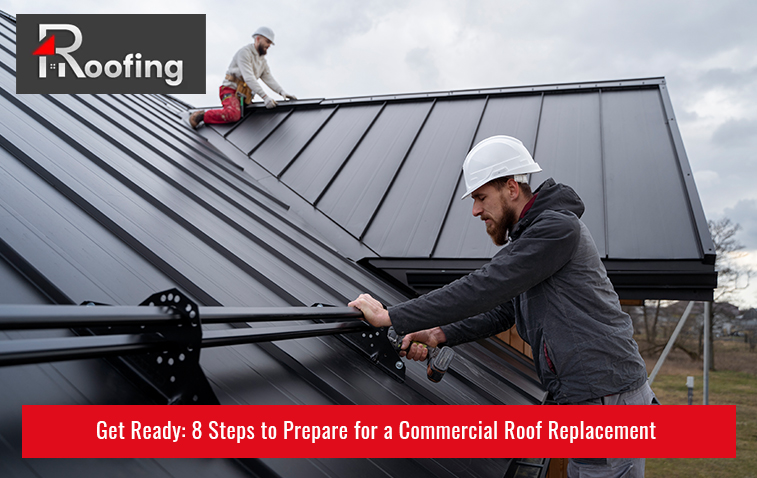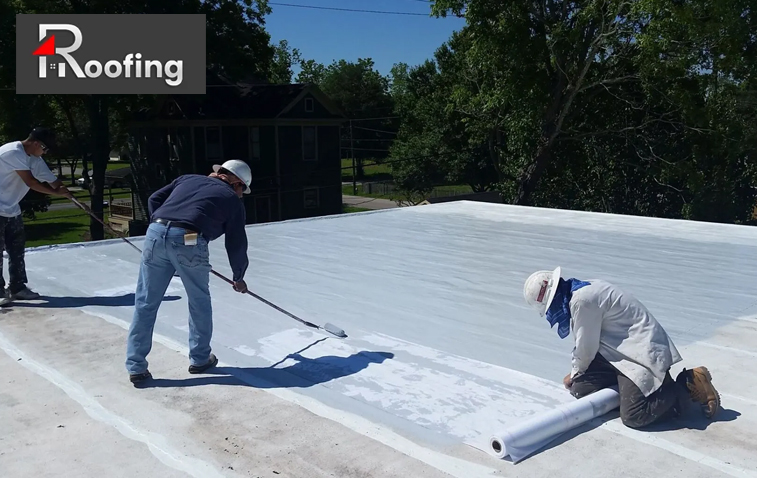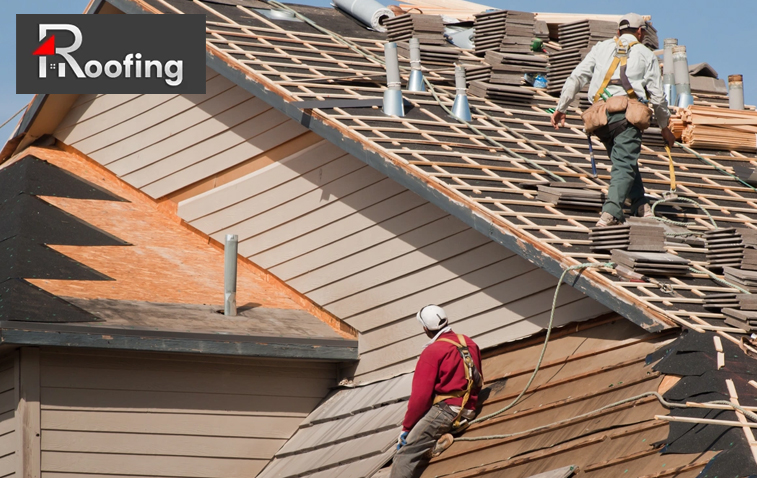The roof of a commercial building is more than just a protective covering; it’s a critical investment in the longevity and functionality of the entire structure. As time passes and environmental factors take their toll, even the most robust commercial roofs eventually require replacement. A commercial roof replacement project demands meticulous planning and preparation to ensure minimal disruption to business operations and maximum efficiency in execution. A well-prepared roof replacement project not only safeguards the building and its contents but also contributes to improved energy efficiency and potentially lower insurance premiums.

By taking proactive steps to prepare for this major renovation, business owners and property managers can mitigate risks, streamline the process, and set the stage for a successful outcome. The following guide outlines eight essential steps to prepare for a commercial roof replacement, providing a roadmap for navigating this complex but necessary project with confidence and foresight.
The first step in commercial roof replacement preparation is to conduct a thorough assessment of the current roof’s condition. This evaluation will provide crucial information to guide the replacement process and help identify any underlying issues that need to be addressed.
Consider engaging a professional roofing consultant or engineer to conduct this assessment, as they can provide an unbiased, expert evaluation of your roof’s condition.
Armed with the information from your roof assessment, the next step is to develop a comprehensive project plan. This plan will serve as your roadmap throughout the replacement process, helping to ensure that all aspects of the project are considered and coordinated.
A well-crafted project plan will help minimize surprises, control costs, and keep the replacement process on track.
Before any work can begin, it’s crucial to obtain all required permits and approvals. This step ensures that your roof replacement project complies with local building codes and regulations.
Remember that the permitting process can take time, so start this step early in your preparation to avoid delays in your project timeline.
Proper preparation of the building and its occupants is essential to minimize inconvenience and ensure safety during a commercial roof replacement, which can be disruptive to daily operations.
Thorough preparation and clear communication will help maintain safety, productivity, and positive morale during the roof replacement process.

Many commercial buildings have various equipment installed on the roof, such as HVAC units, satellite dishes, or solar panels. Coordinating with specialists for these systems is crucial for a smooth roof replacement.
A commercial roof replacement generates a significant amount of waste material. Developing a comprehensive waste management strategy is essential for environmental responsibility and project efficiency.
Consider partnering with a waste management company specializing in construction waste to optimize your strategy and potentially achieve zero-waste goals.
Safety should be a top priority throughout the roof replacement process. Implementing comprehensive safety measures protects workers, building occupants, and property.
Prioritizing safety not only protects individuals but also helps prevent costly accidents and project delays.

The final step in preparing for a commercial roof replacement is to establish systems for documenting the entire process and preparing for the eventual handover of the completed roof.
By following these eight steps, commercial building owners and managers can thoroughly prepare for a roof replacement project, setting the stage for a smooth, efficient, and successful renovation. Proper preparation not only helps ensure the longevity and performance of the new roof but also minimizes disruptions to business operations and protects the safety of all involved. With thorough preparation and meticulous attention to detail, a commercial roof replacement can shift from a daunting challenge to a valuable opportunity to enhance the building’s performance, efficiency, and longevity.
Consider conducting work during off-hours or weekends. Use phased replacement approaches for large roofs. Implement noise reduction strategies and create clear communication channels with tenants. Temporarily relocate sensitive operations if necessary. Plan for alternative entry/exit points to maintain business continuity.
Consider cool roofing materials to reduce heat absorption. Explore green roof systems for improved insulation and stormwater management. Look into recycled or recyclable roofing materials. Investigate solar panel integration during the replacement process. Choose materials with long lifespans to reduce future waste.
A new roof can potentially lower insurance premiums due to reduced risk. Inform your insurance provider about the replacement project. Update your policy to reflect the new roof’s value. Consider additional coverage during the construction phase. The type of roofing material chosen may impact insurance rates.
Explore smart roofing systems with embedded sensors for leak detection and performance monitoring. Consider integrated solar technologies for energy generation. Look into advanced insulation materials for improved energy efficiency. Investigate drone-friendly designs for easier future inspections. Consider IoT-enabled systems for real-time roof condition monitoring.

12 Roofing
12 Roofing brings together seasoned roofers and contractors to provide premier roofing solutions. Explore our comprehensive services and experience the exceptional quality and professionalism we offer.
Tile roofing is a classic choice for Burbank homeowners seeking […]
Have you ever imagined a roof that doesn’t just protect […]
Rain gutters plus are required in ensuring that water does […]
Speak with our in-house experts in residential roofing services for new ideas!
Copyright © 12 Roofing - 2025. All Rights Reserved.
